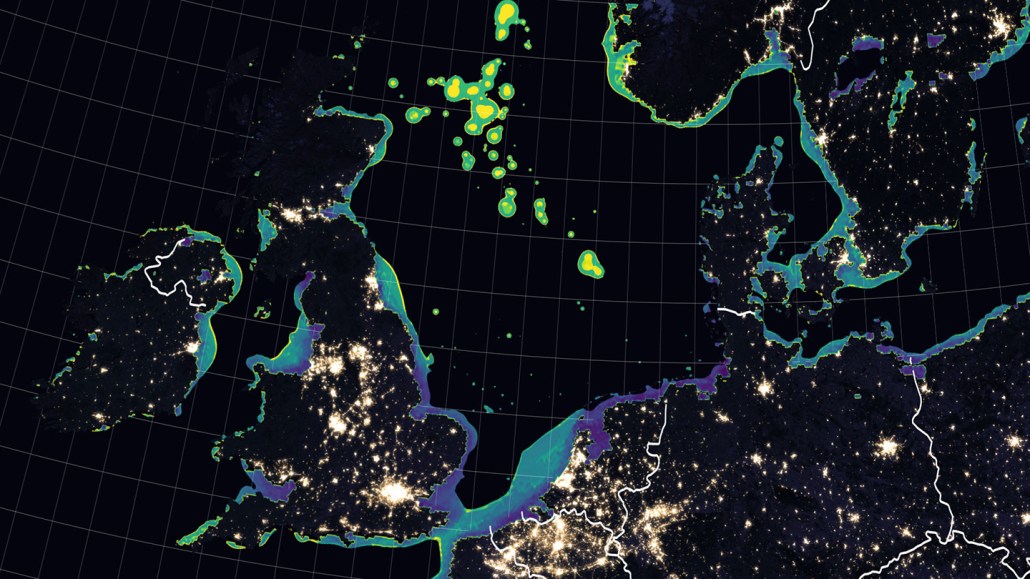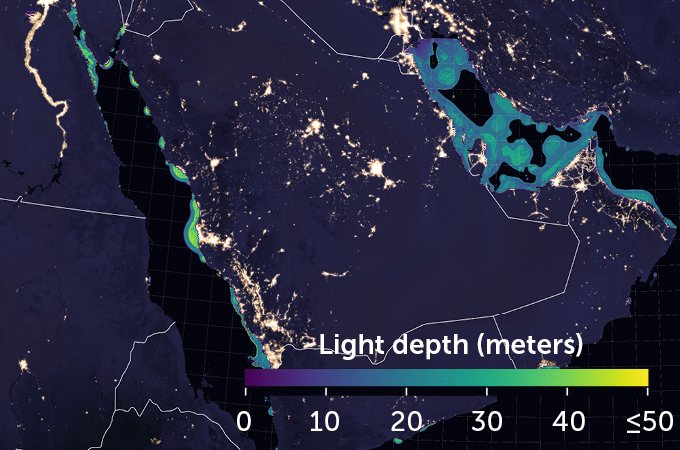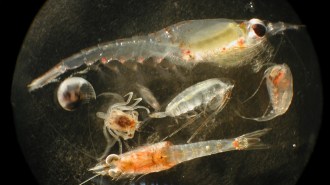Even the sea has light pollution. These new maps show its extent
Lights from coastal and offshore development may impact marine organisms far below the surface

Offshore oil and gas rigs and wind farms in the North Sea shine brightly on the water, as does the glow of coastal cities in, for example, the United Kingdom (landmass at left) and Norway (upper right). In April, the region’s waters are clear enough that the artificial light can penetrate from 1 meter (dark blue) to 30 meters (yellow) deep.
Joshua Stevens, T.J. Smyth et al/Elementa: Science of the Anthropocene 2021





